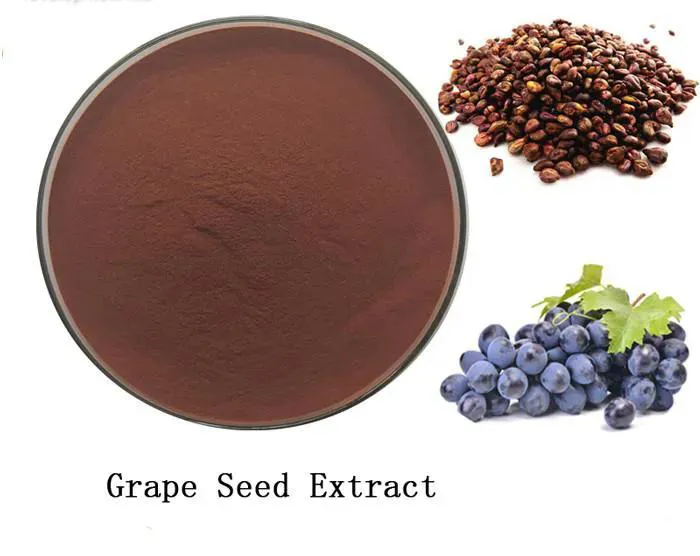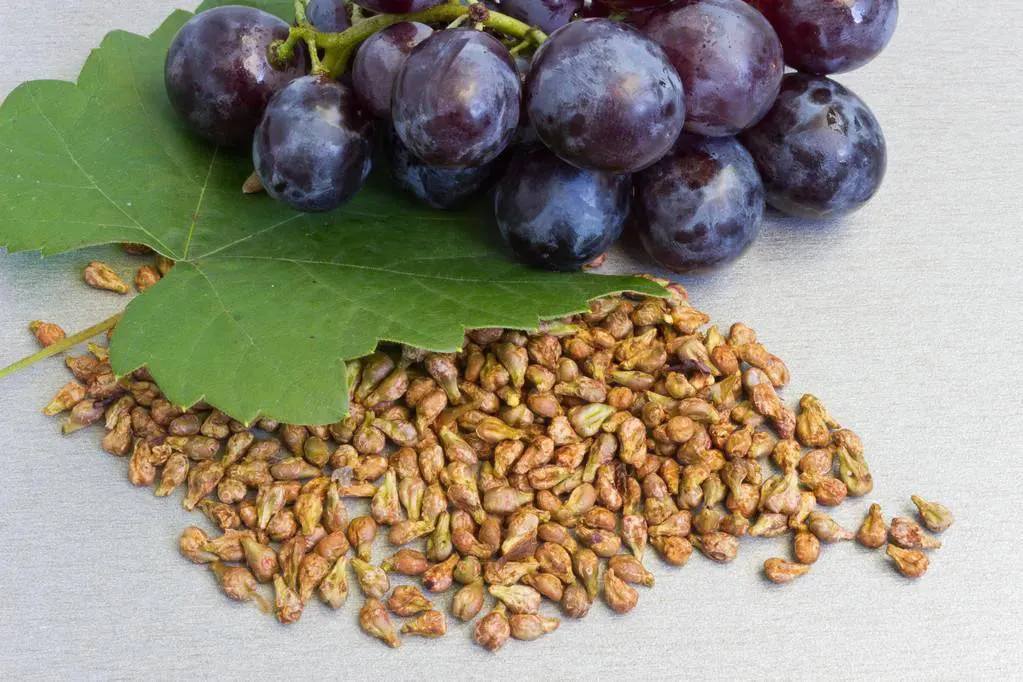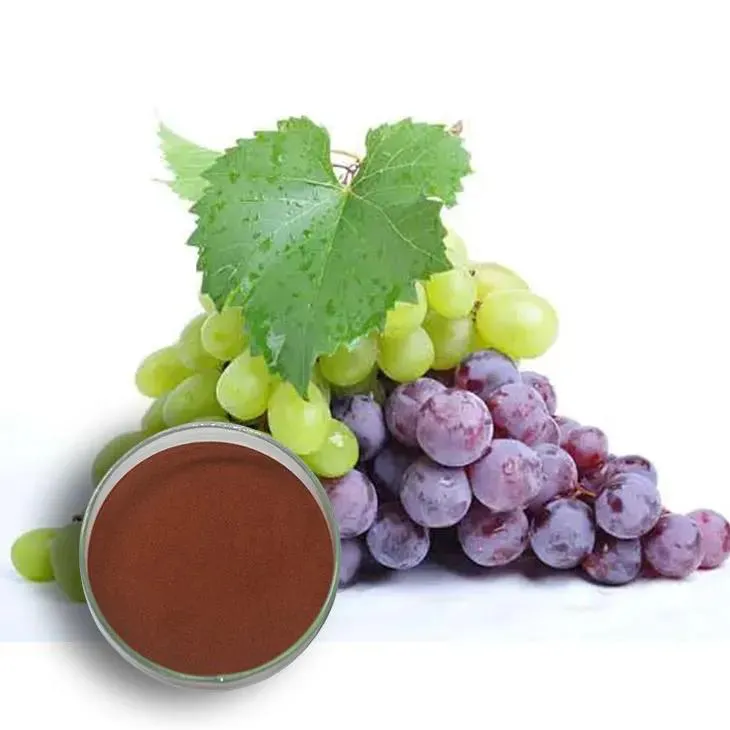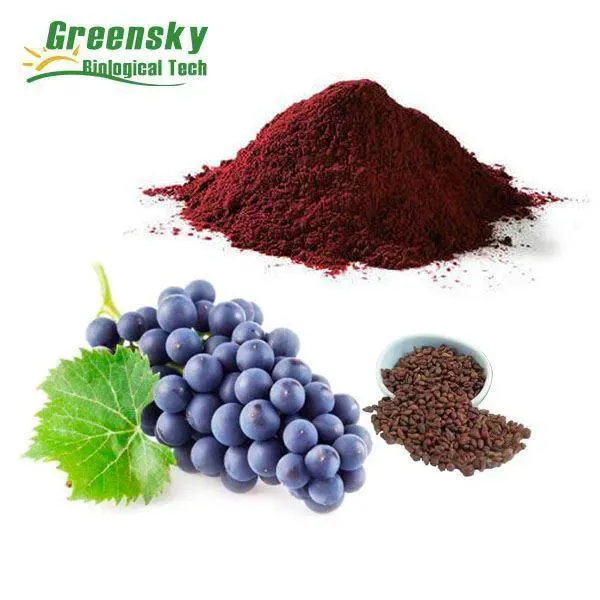- 0086-571-85302990
- sales@greenskybio.com
Overcoming the Challenges: Innovative Grape Seed Extract Waste Management Strategies
2024-07-23

1. Introduction
Grape Seed Extract has emerged as a highly valuable substance with applications spanning across various industries, including the food, pharmaceutical, and cosmetic sectors. However, the production process of Grape Seed Extract generates a significant amount of waste, which if not managed properly, can lead to environmental degradation, economic losses, and potential health hazards. This article aims to explore innovative strategies for managing Grape Seed Extract waste, taking into account environmental, economic, and technological aspects.

2. Environmental Challenges of Grape Seed Extract Waste
2.1 Organic Matter Decomposition
Grape seed extract waste is rich in organic matter. When disposed of improperly, such as in landfills, the decomposition of this organic matter can produce methane, a potent greenhouse gas. Methane has a much higher global warming potential than carbon dioxide, contributing significantly to climate change.
2.2 Water Pollution
If grape seed extract waste is released into water bodies, it can cause water pollution. The waste may contain residues of chemicals used in the extraction process, such as solvents and surfactants. These substances can be toxic to aquatic organisms, disrupting the ecological balance of water ecosystems.

3. Economic Challenges of Grape Seed Extract Waste
3.1 Cost of Disposal
The traditional methods of waste disposal, such as incineration and landfill, come with significant costs. Incineration requires energy input and proper air pollution control measures, while landfills need to be maintained and monitored. These costs can eat into the profits of grape seed extract producers.
3.2 Lost Opportunities for Value - Added Products
Viewing grape seed extract waste as just waste means missing out on potential economic opportunities. There are valuable components in the waste that could be further processed into high - value products, such as bio - fertilizers or bio - fuels. By not exploring these possibilities, companies are forfeiting additional revenue streams.

4. Technological Challenges of Grape Seed Extract Waste
4.1 Extraction and Separation Technologies
Current extraction technologies for grape seed extract may not be optimized for minimizing waste. There is a need for more efficient extraction and separation technologies that can maximize the extraction of useful components while reducing the amount of waste generated. For example, some traditional extraction methods may leave behind a significant amount of bioactive compounds in the waste due to incomplete extraction.
4.2 Waste Treatment Technologies
The existing waste treatment technologies may not be suitable for all types of grape seed extract waste. Different waste components may require different treatment methods. For instance, the treatment of organic waste may require different processes than the treatment of waste containing chemical residues.

5. Innovative Waste Management Strategies
5.1 Bioremediation
Bioremediation is a promising approach for dealing with grape seed extract waste. Microorganisms can be used to break down the organic components of the waste. For example, certain bacteria and fungi are capable of degrading the complex organic compounds present in the waste into simpler, less harmful substances.
- One advantage of bioremediation is its environmental friendliness. It does not produce harmful by - products like some chemical treatment methods.
- It can also be a cost - effective solution as it often requires less energy input compared to traditional waste treatment methods.
5.2 Conversion to Bio - Fuels
The organic matter in grape seed extract waste can be converted into bio - fuels. Through processes such as anaerobic digestion or fermentation, the waste can be transformed into biogas or bioethanol.
- This not only provides a solution for waste management but also contributes to the development of renewable energy sources.
- Companies can potentially reduce their dependence on fossil fuels and also gain additional revenue from selling the bio - fuels.
5.3 Production of Bio - Fertilizers
Grape seed extract waste contains nutrients that can be beneficial for plant growth. By composting or further processing the waste, it can be turned into bio - fertilizers.
- Bio - fertilizers produced from grape seed extract waste can improve soil structure and fertility.
- They can also reduce the need for chemical fertilizers, which are often associated with environmental pollution.
6. Technological Innovations for Waste Management
6.1 Advanced Extraction Technologies
New extraction technologies are being developed to minimize waste generation. For example, supercritical fluid extraction uses a fluid in a supercritical state to extract the active components from grape seeds more efficiently.
- This technology can increase the yield of grape seed extract while reducing the amount of waste left behind.
- It also has the advantage of being a more environmentally friendly extraction method as it often uses non - toxic solvents.
6.2 Integrated Waste Treatment Systems
Integrated waste treatment systems combine multiple treatment processes to deal with different components of grape seed extract waste more effectively.
- For example, a system may first use physical separation to remove large particles, followed by chemical treatment to neutralize harmful substances, and finally bioremediation to degrade the remaining organic matter.
- Such systems can be customized according to the specific characteristics of the waste, providing a more comprehensive waste management solution.
7. Economic Considerations of Innovative Strategies
7.1 Cost - Benefit Analysis
When implementing innovative waste management strategies, a cost - benefit analysis is crucial. For example, while the initial investment in a new extraction technology or a waste - to - bio - fuel conversion plant may be high, the long - term benefits in terms of reduced waste disposal costs, additional revenue from selling value - added products, and environmental compliance can outweigh the costs.
- Companies need to carefully evaluate the costs associated with each stage of the waste management process, including the purchase of equipment, operation and maintenance costs, and the cost of raw materials.
- They also need to consider the potential revenue from selling products such as bio - fuels, bio - fertilizers, or any other value - added products derived from the waste.
7.2 Incentives and Subsidies
Governments can play a role in promoting innovative waste management strategies by providing incentives and subsidies. For example, tax breaks can be given to companies that invest in green waste management technologies.
- Subsidies can also be provided for research and development in waste management, encouraging companies to explore new and more efficient waste management methods.
- These incentives can help offset the high initial costs associated with implementing innovative waste management strategies, making them more economically viable for companies.
8. Environmental Benefits of Innovative Strategies
8.1 Reduction in Greenhouse Gas Emissions
By converting grape seed extract waste into bio - fuels, there is a reduction in the use of fossil fuels, which in turn reduces greenhouse gas emissions. Additionally, bioremediation and other waste management strategies that prevent the release of methane from decomposing waste also contribute to the reduction of greenhouse gas emissions.
- For example, if grape seed extract waste is anaerobically digested to produce biogas instead of being landfilled, the methane that would have been released during landfill decomposition is captured and used as a fuel, reducing its impact on the climate.
8.2 Protection of Water Resources
The proper management of grape seed extract waste through strategies such as the production of bio - fertilizers instead of dumping waste into water bodies helps protect water resources. By reducing the release of chemical residues and organic matter into water, the quality of water bodies is maintained.
- Bio - fertilizers produced from waste can also have a positive impact on soil water retention, which can indirectly contribute to water conservation.
9. Conclusion
In conclusion, the waste management of grape seed extract is a complex issue with environmental, economic, and technological challenges. However, through innovative strategies such as bioremediation, conversion to bio - fuels and bio - fertilizers, and technological innovations in extraction and waste treatment, these challenges can be overcome. Economic considerations, including cost - benefit analysis and the role of incentives and subsidies, are also important factors in promoting the adoption of these innovative strategies. Moreover, the environmental benefits of these strategies, such as the reduction in greenhouse gas emissions and protection of water resources, make them not only economically viable but also environmentally sustainable solutions for grape seed extract waste management.
FAQ:
What are the main challenges in grape seed extract waste management?
The main challenges include environmental pollution risks, such as improper disposal causing soil and water contamination. There are also economic issues, as the cost of traditional waste treatment methods can be high. Technologically, finding efficient and sustainable ways to process the waste is difficult due to the complex composition of grape seed extract waste.
How can environmental aspects be considered in innovative waste management strategies?
Innovative strategies can focus on reducing waste volume through recycling and reusing. For example, some components of the waste can be converted into useful by - products that are environmentally friendly. Also, proper disposal methods like composting can be explored to minimize negative impacts on the environment.
What economic benefits can innovative grape seed extract waste management bring?
By implementing innovative waste management, costs associated with traditional disposal methods can be reduced. Moreover, new revenue streams can be created through the production of valuable by - products from the waste. For example, some components can be used in the cosmetic or pharmaceutical industries, generating additional income.
What technological advancements are available for grape seed extract waste management?
Advanced extraction techniques can be used to recover more valuable substances from the waste. Biotechnological processes, such as enzymatic treatment, can also be applied to break down the waste more efficiently. Additionally, new separation technologies can help in isolating different components of the waste for further utilization.
How can these innovative strategies be implemented in practice?
First, companies need to invest in research and development to explore the feasibility of these strategies. Then, collaboration between different industries, such as the food, pharmaceutical, and environmental industries, is crucial. Regulatory support can also play a role in promoting the adoption of these innovative waste management strategies.
Related literature
- Innovative Approaches to Food Industry Waste Management"
- "Sustainable Waste Management in the Extract - based Industries"
- "Technological Innovations for Effective Agricultural Waste Management"
- ▶ Hesperidin
- ▶ citrus bioflavonoids
- ▶ plant extract
- ▶ lycopene
- ▶ Diosmin
- ▶ Grape seed extract
- ▶ Sea buckthorn Juice Powder
- ▶ Beetroot powder
- ▶ Hops Extract
- ▶ Artichoke Extract
- ▶ Reishi mushroom extract
- ▶ Astaxanthin
- ▶ Green Tea Extract
- ▶ Curcumin Extract
- ▶ Horse Chestnut Extract
- ▶ Other Problems
- ▶ Boswellia Serrata Extract
- ▶ Resveratrol Extract
- ▶ Marigold Extract
- ▶ Grape Leaf Extract
- ▶ blog3
- ▶ blog4
- ▶ blog5
-
Bayberry Extract
2024-07-23
-
Tongkat Ali Extract Powder
2024-07-23
-
Dandelion Root Extract
2024-07-23
-
Hawthorn powder
2024-07-23
-
Resveratrol extract
2024-07-23
-
Saponin Extract
2024-07-23
-
Europen Bilberry Extract
2024-07-23
-
Peppermint Extract Powder
2024-07-23
-
Bitter Melon Extract
2024-07-23
-
Sugarcane Extract
2024-07-23





















